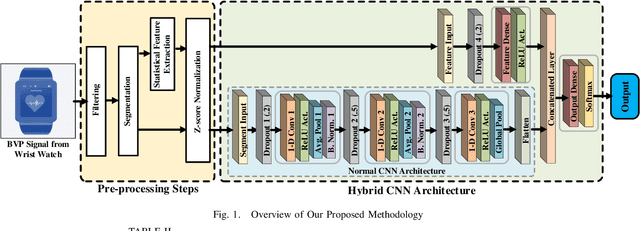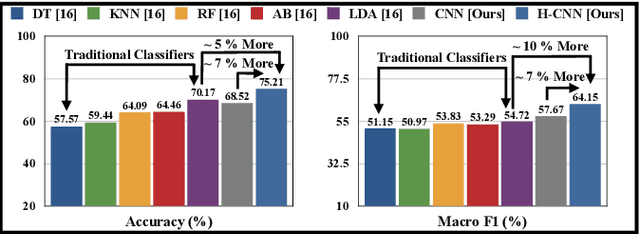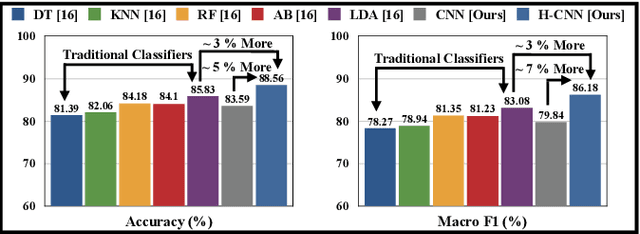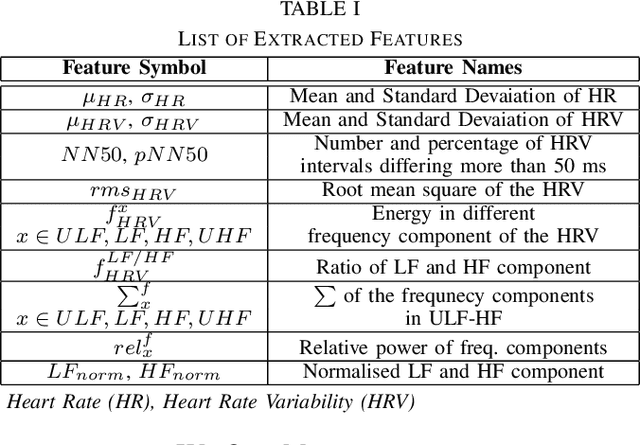Feature Augmented Hybrid CNN for Stress Recognition Using Wrist-based Photoplethysmography Sensor
Paper and Code
Aug 02, 2021



Stress is a physiological state that hampers mental health and has serious consequences to physical health. Moreover, the COVID-19 pandemic has increased stress levels among people across the globe. Therefore, continuous monitoring and detection of stress are necessary. The recent advances in wearable devices have allowed the monitoring of several physiological signals related to stress. Among them, wrist-worn wearable devices like smartwatches are most popular due to their convenient usage. And the photoplethysmography (PPG) sensor is the most prevalent sensor in almost all consumer-grade wrist-worn smartwatches. Therefore, this paper focuses on using a wrist-based PPG sensor that collects Blood Volume Pulse (BVP) signals to detect stress which may be applicable for consumer-grade wristwatches. Moreover, state-of-the-art works have used either classical machine learning algorithms to detect stress using hand-crafted features or have used deep learning algorithms like Convolutional Neural Network (CNN) which automatically extracts features. This paper proposes a novel hybrid CNN (H-CNN) classifier that uses both the hand-crafted features and the automatically extracted features by CNN to detect stress using the BVP signal. Evaluation on the benchmark WESAD dataset shows that, for 3-class classification (Baseline vs. Stress vs. Amusement), our proposed H-CNN outperforms traditional classifiers and normal CNN by 5% and 7% accuracy, and 10% and 7% macro F1 score, respectively. Also for 2-class classification (Stress vs. Non-stress), our proposed H-CNN outperforms traditional classifiers and normal CNN by 3% and ~5% accuracy, and ~3% and ~7% macro F1 score, respectively.
 Add to Chrome
Add to Chrome Add to Firefox
Add to Firefox Add to Edge
Add to Edge